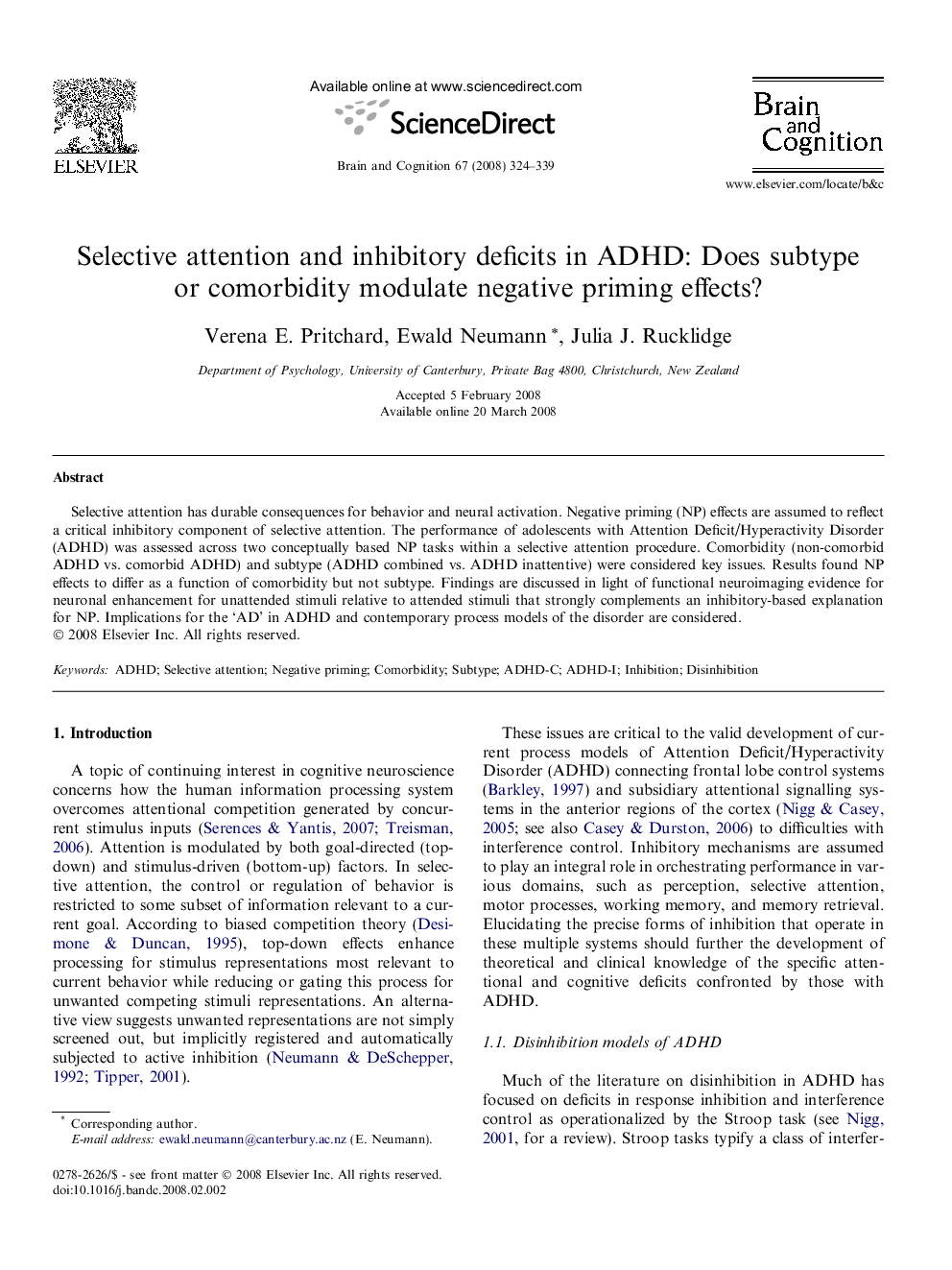| Article ID | Journal | Published Year | Pages | File Type |
|---|---|---|---|---|
| 924502 | Brain and Cognition | 2008 | 16 Pages |
Selective attention has durable consequences for behavior and neural activation. Negative priming (NP) effects are assumed to reflect a critical inhibitory component of selective attention. The performance of adolescents with Attention Deficit/Hyperactivity Disorder (ADHD) was assessed across two conceptually based NP tasks within a selective attention procedure. Comorbidity (non-comorbid ADHD vs. comorbid ADHD) and subtype (ADHD combined vs. ADHD inattentive) were considered key issues. Results found NP effects to differ as a function of comorbidity but not subtype. Findings are discussed in light of functional neuroimaging evidence for neuronal enhancement for unattended stimuli relative to attended stimuli that strongly complements an inhibitory-based explanation for NP. Implications for the ‘AD’ in ADHD and contemporary process models of the disorder are considered.
